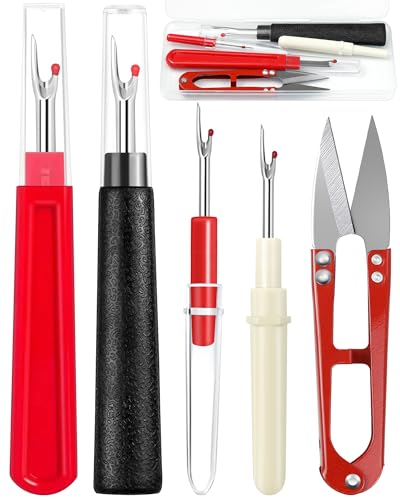I’ve always loved the charm of handmade items, especially when they’re both beautiful and practical. A fabric trivet is one of those little things that can add a touch of personality to your kitchen while protecting your surfaces from hot dishes. Plus, making one yourself is easier than you might think—and it’s a great way to use up fabric scraps or experiment with fun patterns.
Whether you’re a seasoned crafter or just dipping your toes into DIY projects, creating a fabric trivet is a simple and satisfying project. It doesn’t take much time, and the result is something you’ll actually use. Let me show you how to make one that’s not only functional but also a lovely addition to your table setting.
Materials Needed
Creating a fabric trivet requires a few essential items. Here’s everything I use for this quick and fun project:
- Fabric pieces: Two 10×10-inch cotton fabric squares. I prefer cotton because it’s durable, heat-resistant, and easy to work with. Patterns or solid colors work equally well.
- Batting or insulating material: One 8×8-inch piece of insulated batting, such as Insul-Bright. It protects surfaces from hot dishes. Quilt batting can work if insulation isn’t a priority.
- Thread: High-quality all-purpose sewing thread in a color matching or contrasting the fabric. This adds durability and aesthetic appeal.
- Pins or clips: To hold the fabric layers securely while sewing.
- Fabric scissors: Sharp scissors ensure clean cuts and prevent fraying. Rotary cutters are another option for precise cutting.
- Sewing machine: For stitching the layers. A basic model works perfectly for this project.
- Measuring tools: A quilter’s ruler or tape measure guarantees accurate measurements.
- Iron and ironing board: Essential for pressing fabric seams and creating clean folds.
These materials ensure the trivet is safe, functional, and visually appealing.
Preparing Your Fabric
Careful preparation ensures your trivet has a professional finish. Selecting suitable fabric and precise cutting are key steps to success.
Choosing the Right Fabric
I recommend using 100% cotton fabric because it’s durable, heat-resistant, and easy to work with. If you’re using fabric scraps, make sure they’re clean and free from heavy wear. Opt for medium-weight cotton; lightweight fabrics may not provide enough support, and heavy fabrics can be difficult to sew. Patterns or solid colors work equally well, depending on your design preference.
Cutting the Pieces
Cut two 10×10-inch cotton squares for the trivet’s outer layers. Use a rotary cutter or sharp fabric scissors for clean edges. From insulated batting, cut an 8×8-inch square, ensuring it fits neatly between the fabric layers when assembled. Double-check all measurements with a ruler or quilting grid to maintain accuracy before moving to the assembly phase.
Assembling the Trivet
Creating a fabric trivet involves layering materials and securing them to form a sturdy, heat-resistant surface. Proper assembly ensures the trivet’s durability and functionality.
Layering the Fabric
I start by placing one 10×10-inch fabric square face-down on a flat surface. The right side of the fabric should face downward, as it’ll be the trivet’s outer base. Next, I position the 8×8-inch insulated batting centered on top of the fabric. This leaves a 1-inch border of fabric exposed on all sides. Then, I place the second 10×10-inch fabric square face-up over the batting, aligning its edges with the base square. The batting should now be sandwiched between the fabric layers with their right sides facing outward.
Adding Insulation
To secure the batting, I use pins or clips to hold all layers firmly in place, ensuring no shifting occurs during sewing. I fold the edges of the base fabric up and over the top fabric and batting. These folds create a clean, finished edge around the trivet’s perimeter. I double-check the corners, folding them neatly for a smooth appearance. Once everything’s aligned, I press the layers lightly with a warm iron without touching the batting to keep the surface even and ready for stitching.
Sewing the Trivet
After layering and securing the fabric and batting, it’s time to bring the trivet to life with some simple sewing techniques. I’ll guide you through stitching the layers together and adding a decorative pattern for a polished, professional look.
Stitching the Layers Together
I start by setting my sewing machine to a straight stitch. Next, I place the layered trivet under the presser foot, ensuring the edges are properly aligned. Sewing close to the edge, around 1/4 inch from the folded edges, I create a neat border stitch that holds all three layers securely together. I adjust the speed to maintain control and ensure smooth, even stitching. When I reach each corner, I pivot the fabric with the needle down, ensuring crisp and clean turns. Once the perimeter is stitched, I backstitch at the end to lock the seams.
If machine sewing isn’t an option, I use a hand-sewing needle with strong thread and a simple backstitch method to create an equally durable finish.
Creating a Decorative Pattern
Adding a decorative pattern enhances the trivet’s charm and keeps the batting from shifting inside. I use a fabric marker to draw a simple grid, diagonal lines, or any creative design on the top fabric layer. My go-to is a crosshatch pattern, as it’s functional and visually appealing.

Using the same straight stitch, I carefully sew along the marked lines, starting at one side and working across the trivet. I keep the stitches consistent, spacing them 1-2 inches apart, depending on my design. For an added touch, I sometimes switch to a contrasting thread color to make the pattern stand out. After completing the design, I trim any excess thread ends for a tidy finish.
Finishing Touches
Every detail matters when completing a handmade fabric trivet. Small finishing steps enhance functionality and aesthetics, making the project truly stand out.
Adding an Optional Loop
Including a fabric loop adds versatility to your trivet, allowing it to double as a decorative kitchen accessory. I cut a strip of matching fabric approximately 1×5 inches, fold it lengthwise with the right sides facing inward, and stitch along the open edge. After turning the fabric right-side out, I press it flat with an iron.
I then fold the strip into a loop, align the raw edges with one corner of the trivet’s edge, and secure it with a pin. When stitching the final edge or border, I make sure the loop is firmly enclosed within the seam for added durability.
Trimming Excess Threads
A clean finish improves the professionalism of the trivet. I carefully inspect my project for stray threads that may distract from the design. Using sharp fabric scissors or thread snips, I trim all loose ends close to the stitching for a polished appearance.
« Step-by-Step Guide to Sewing a Travel Laundry Bag: A Fun & Easy DIY Project You’ll Love
Master Sewing a Summer Hat: A Fun Project to Elevate Your Style and Beat the Heat »
For additional precision, I remove any excess fabric from the seam allowances, being cautious not to cut into the stitches. This small step ensures the edges remain neat and the trivet lays flat, ready for use or display.
Conclusion
Making a fabric trivet is such a rewarding DIY project. It’s a chance to get creative, use up fabric scraps, and craft something that’s both functional and beautiful for your home. Whether you’re a seasoned crafter or just starting out, this project offers the perfect mix of simplicity and charm.
I love how a handmade trivet adds a personal touch to the kitchen while being practical for everyday use. Plus, it’s always fun to see how small details like fabric patterns or decorative stitching can make a big difference. Give it a try and enjoy the satisfaction of creating something uniquely yours!

















